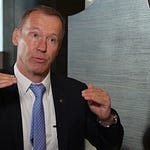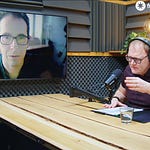In the 1970s, the case rate for autism was 1 in 10,000 in the United States. In 1995, it was already 1 in 1,000. “But now, in 2025, it is at 1 in 31,” epidemiologist Nicolas Hulscher, MPH, says. “This is just skyrocketing. That is over 2% of all children here in the US. This is not something to joke around about. 26.7% of these cases have what is called profound autism, where they require 24/7 daily care. They can’t live on their own. They are not able to hold a job. They can’t even speak, some of them. Their parents’ lives will be shattered, their lives will be shattered,” Hulscher says.
So what might be the cause for such a dramatic increase? Increased screening? Or could it be vaccines?
Since the National Childhood Vaccine Injury Act of 1986, which effectively lifted all financial liability for vaccine injuries from the vaccine manufacturers, the childhood vaccine schedule has expanded enormously. Currently, the U.S. childhood vaccine schedule consists of 72 doses for children up to the age of 18.
Now Hulscher, who also serves as the administrator of the McCullough Foundation, is, alongside Dr. Peter A. McCullough and others, one of the authors of a new study on the links between vaccines and autism. Although vaccines have been discussed as a direct or at least a contributing cause of autism for a long time, there has never been any comparable effort to sort this question out, according to Hulscher. Their new study—“Determinants of Autism Spectrum Disorder”—looks at over 300 peer-reviewed papers and draws a conclusion that “combination and early-timed routine childhood vaccination emerges as the single most significant driver of autism risk, supported by convergent mechanistic, clinical and epidemiologic evidence.”
“We found in 12 studies with real unvaccinated control groups that all 12 of them found that the vaccinated had higher rates of neurodevelopmental disorders. Not just autism, but tics, ADHD, as well as chronic diseases including asthma, autoimmune disorders, skin disorders, allergic disorders. The evidence was quite clear,” Hulscher says.
In the episode, we will discuss why it is still the case that such reports and concerns are largely met with accusations of spreading misinformation rather than triggering further studies by the authorities.
We will also look at the current state of health policies under HHS Secretary Robert F. Kennedy Jr. and ask why the U.S. health authorities have not been making any moves against the provably hazardous mRNA platform.










